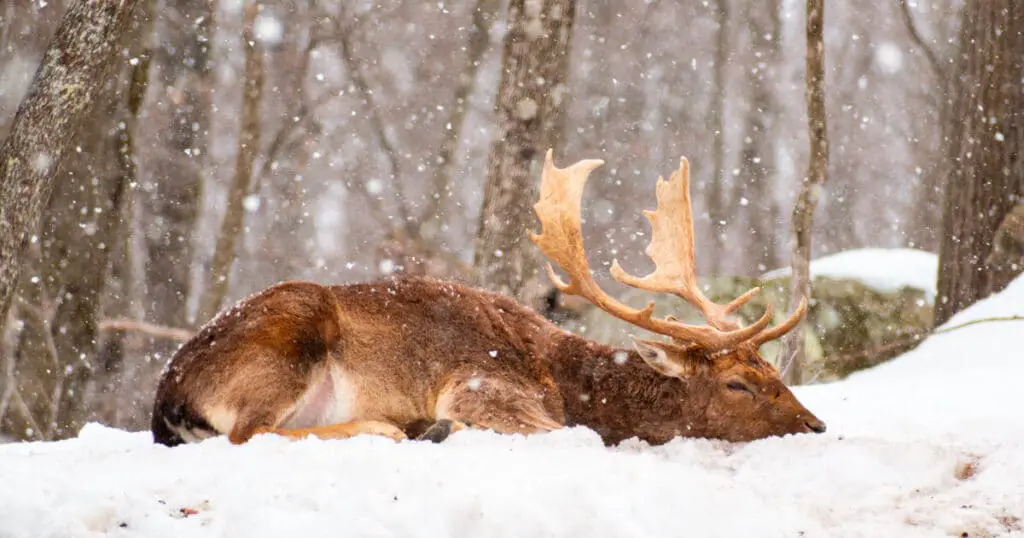Most of us know that some animals (such as the North American black bear) hunker down to sleep through the cold winter months. This is called hibernation. Have you ever wondered what deer do in the winter? Do deer hibernate?
Let’s find out if deer hibernate like bears. Do deer sleep all winter, or do they stay awake and mobile?
Do Deer Hibernate? (Answered)
No, deer don not hibernate during the winter. They stay awake and active during this time of the year, bedding down during stormy winter weather. While they tend to be less active in winter to conserve energy, they do move around frequently in winter to find food, which is more difficult to find at this time of year.
Why Don’t Deer Hibernate?
The deer’s body isn’t biologically able to go into hibernation.
One reason hibernation isn’t possible for deer is the fact their bodies use a lot of energy during the rut (mating season) and this usually happens right before winter begins.
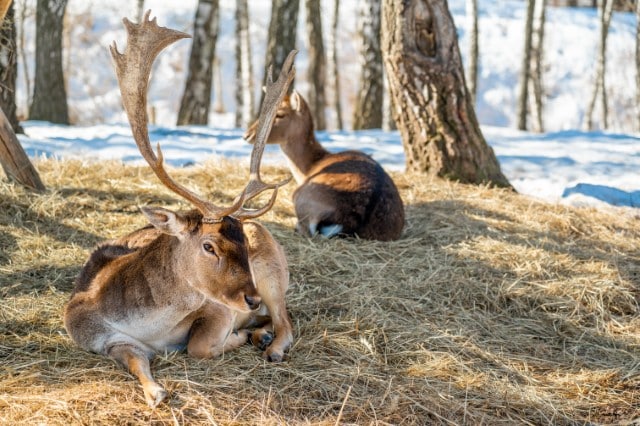
For months every fall, male deer chase after female deer and fight off other males, traveling more and expending a lot of energy.
This leaves deer vulnerable during the cold of winter. Male deer must spend that time replenishing their energy and re-establishing their fat reserves.
Females must nurture their developing fawns throughout their gestation period so that they can raise healthy young the next spring.
So, we know that deer don’t hibernate. Let’s learn more about what deer do during the cold winter months instead.
What Do Deer Do in the Winter?
Winter involves cold weather and scarce food supplies, and deer must adapt to these conditions. This involves changes in the way their bodies work and how they behave to stay active.
Deer can lower their metabolism just enough for them to survive.
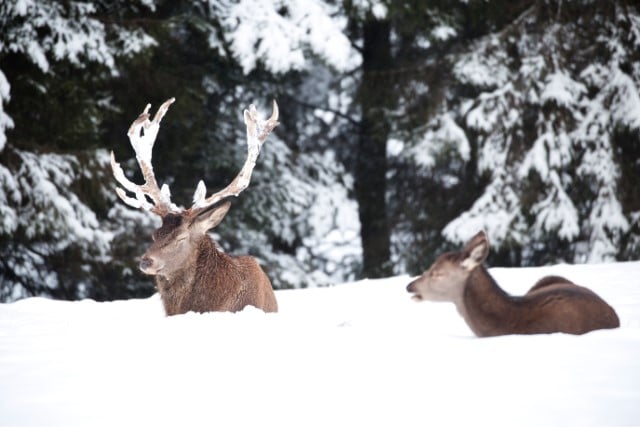
However, these animals must still satisfy their hunger and search for food.
Deer are always looking for an ideal spot for shelter, and that needs to include a convenient escape route from danger.
Tree canopies are common deer shelter spots. This form of shelter is extended to protect deer against the snow and the cold wind.
Deer may also bed down in deer yards in the winter. This is a specific behavior where deer get together and gather closely in a single area.
They’ll often stay a long time in this collective space.
Deer yards mean the animals can enjoy physical comfort, warmth, and the chance to create stronger bonds with the group.
How Do Deer Stay Warm in the Winter?
Deer find places with cover that provide shelter to stay warm in the winter.
This can be done by finding a canopy nearby which protects them against wind and cold. However, there are other ways they do it too. One such example is that of them growing guard hair.
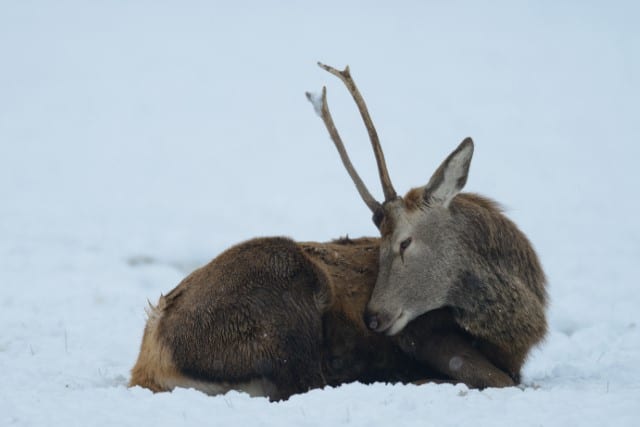
A deer coat’s guard hair is usually thicker than the undercoat. Deer change between their summer hair coat and winter coat during the course of the year.
The deer also releases water-repellent oils, and this adds that quality to the animal’s coat. In other words, it doesn’t trap water that can make the deer cold.
The fur is also darker colored in winter, to trap more heat.
Deer also lower their metabolism during the winters. This lowering of temperatures keeps them warm for a longer time as it slowly uses up the fat reserves. In doing so, deer can survive the days when they can’t find food to eat.
How Do Deer Find Food in the Winter?
In the cold months of winter, food becomes scarce and deer change their diet. At this point, they will consume anything that they can find. Deer usually eat leaves, woody stems, bushes, fruits, shrubs, and shoots.
However, in the cold, these items are scarce. Some, because they are covered in snow, and others because they are not in season.
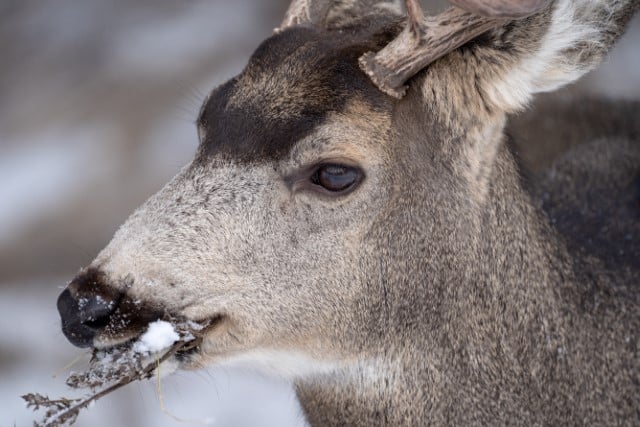
The deer’s primary sources of food are soft and green. However, during the cold, deer begin to eat more foods that are harder and more fibrous. This includes pinecones, barks, and twigs.
They will also resort to eating nuts and corn if available. These foods are not as rich as the summer foods, but it is what they can find and be able to survive on.
Oftentimes, when looking for shelters, deer would try to be near food supplies so that they do not have to move around too much. This helps them conserve their energy so that they can focus purely on survival.
Where Do Deer Go in the Winter?
Deer go and find shelter in heavily wooded areas in their natural habitat. They look for protection in these areas against the weather.
Heavily wooded areas protect them against winds and snow. The pine trees provide a makeshift roof for a deer during the snow and rain.
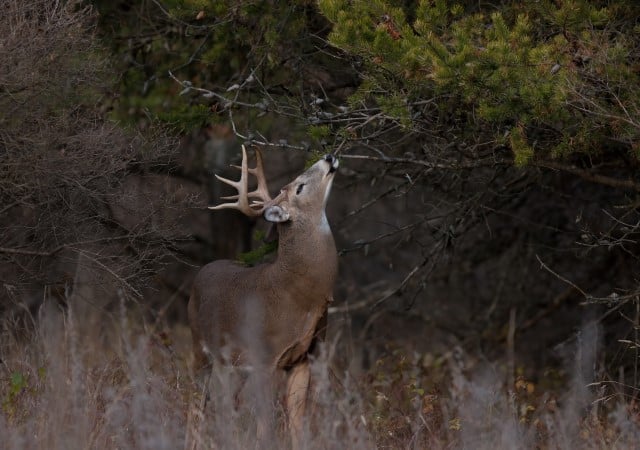
Often, deer can be found sheltering near dense bushes or hollowed-out trees. These features of the natural environment provide them with a temporary warmth in cold weather.
Deer aren’t as active in the winter as they are in the summer. They aren’t able to find as much food.
Their lack of activity helps the deer with two things:
- The reduction of activity reduces metabolism, allowing the animal to use stored energy for longer.
- Moving around less means there is less of a chance that deer will be noticed by predators.
Deer look for places that offer both shelter and relatively abundant food sources in the winter.
Why Do Some Animals Hibernate While Others Don’t?
There is minimal physiological activity during hibernation. The hibernating animal’s metabolism, breathing, body temperature, and heart rate slow down to increase the chance of survival in the cold.
One of the primary reasons animals hibernate is to deal with food scarcity. Hibernation helps animals to conserve energy.
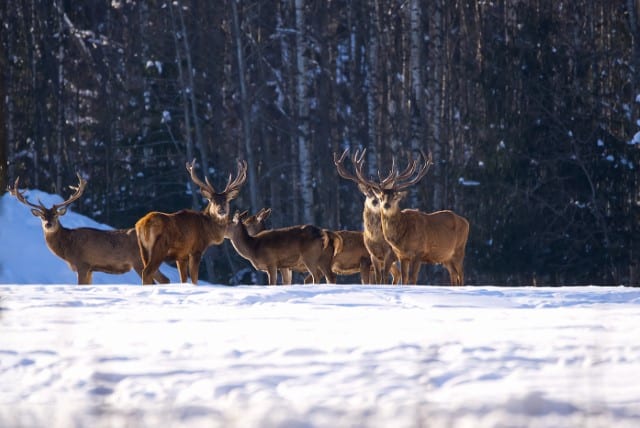
Animals that hibernate must consume and store as much energy as possible before entering that state.
An example is the black bear. It eats as many berries and other high-calorie foods as it can find to fatten up for the winter.
Unlike black bears, deer cannot hibernate. Despite the black bear being the most famous hibernating species, studies show that most animals that can hibernate are on the smaller side.
Do Deer Hibernate? No.
As we’ve learned here, deer cannot hibernate. While they don’t sleep through the winter, they do conserve their energy as much as they can during the cold winter months where food is often in short supply.

